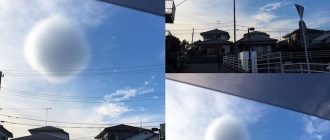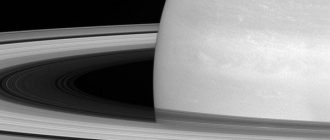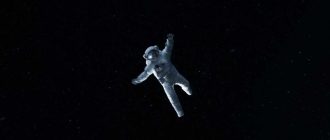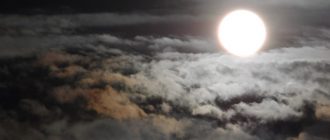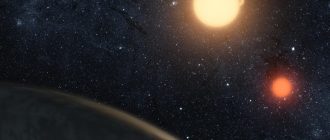
We present to your attention the most beautiful photographs of near and deep space, taken this fall.
Nebula NGC 7023 or Iris Nebula. A nebula is an area filled with cosmic dust. Illuminated from above by the nearby star HD 200775, the Iris Nebula resembles 'pink cotton candy' interspersed with 'diamonds'. In fact, cotton candy is made up of tiny dust particles, and diamonds are the stars behind and in front of the nebula. The nebula is located approximately 1400 light-years from Earth. The diameter is about 6 light years.

The Iris Nebula. (Photo by Tony Hallas)
The Planetary Helix Nebula lies 650 light years from the Sun in the constellation Aquarius and covers an area of 2.5 light years. The nebula was formed due to the end of the 'life path' of a star similar to our Sun, the swollen shell of which flew into the surrounding space, leaving a white dwarf in the center.

The Helix Nebula. (Photo by Martin Pugh)
A very bright and beautiful galaxy NGC 2623 or Arp 243, but in fact they are two spiral galaxies, like the Milky Way, that collided with great speed. The galaxy is located at a distance of 250 million light years from Earth in the constellation Cancer.

Merging galaxy NGC 2623 (Photo by Hubble Legacy Archive, ESA, NASA)
Nebula NGC 6729 is considered one of the closest star forming regions to Earth, which is located in the constellation Southern Corona and combines the characteristics of both an emission and reflection nebula. It is approximately 500 light years distant.

Stars and Dust in the Southern Corona (NGC 6729). (Photo by Marco Lorenzi)
The Orion Nebula (M42, or NGC 197) is an enormous stellar cradle about 1,350 light-years from Earth and 33 light-years across. The Orion Nebula is a favorite observation site for both amateur and professional astronomers. The object was first described in the early seventeenth century. The founder of the first catalog, Messier, made an accurate sketch of its outlines in the middle of the eighteenth century and assigned it number 42 in his famous work.

Heart of the Orion Nebula. (Photo by Hubble)
The supernova remnant Simeis 147 (S147) is located in the constellation Taurus and has a size of almost 3 degrees in the sky (6 times the full moon), which corresponds to a linear size of 150 light years, if we take an estimate of the distance to this cloud from the star's remnants of 3 thousands of light years.

Supernova Remnant Simeis 147. (Photo by Rogelio Bernal Andreo)
A detailed image of the Sun, which was originally shot in a certain red band, then the image was converted into a black-and-white photograph, and then reflected into a negative.

Black Sun and stars. (Photo by Jim Lafferty)
The intimidating name, 'Witch's Head', belongs to the reflection nebula IC 2118, which lies in the southern constellation of Eridanus, approximately 1,000 light-years from Earth.

The Witch's Head Nebula. (Photo by Rogelio Bernal Andreo)
Planetary nebula PK 164 +31.1, the remnant of the atmosphere of a sun-like star, thrown off at the moment when the star completely depleted its supply of nuclear fuel in its interior. Near the center of the nebula, what remains of the star itself is visible: a hot bluish white dwarf. The nebula lies about 1,600 light-years away in the direction of the constellation Lynx.

Planetary nebula PK 164 31.1 (Photo by Don Goldman)
Emission nebula NGC 6164 lies 4200 light-years away in the constellation Nagon. Formed by the stellar wind of a hot massive star HD 148937 3-4 million years old. The nebula is about 4 light years across.

Emission nebula NGC 6164 (Photo by Don Goldman)
Blue space cloud VdB1 surrounded by reflection nebulae. VdB1 lies about 1,600 light-years away toward the constellation Cassiopeia and is about 5 light-years across.

The vdB1. (Photo by Adam Block, Mt. Lemmon SkyCenter, University of Arizona)
The Medusa Nebula (IC 443), located about 5,000 light-years from Earth in the constellation Gemini, is a typical remnant of an explosion that inevitably ends the life of massive stars. Astronomers estimate that this explosion happened 5,000 to 10,000 years ago.

The Medusa Nebula. (Photo by Ken Crawford)
Arp 188, or Tadpole Galaxy, lies about 420 million light-years away towards the constellation Draco. The long tail, which stretches for 280 thousand light years, attracts attention. Spiral galaxy Arp 188 is believed to have collided with another galaxy earlier.

Tadpole Galaxy (Arp 188). (Photo by Hubble)
The Tube Nebula lies about 600-700 light years from Earth in the constellation Ophiuchus. It is a classic example of a dark nebula. Previously, astronomers believed that this region of space was empty of stars. However, it turned out that dark nebulae are composed of clouds of interstellar dust so dense that they completely block out the light of the stars behind them.

The Tube Nebula. (Photo by Yuri Beletsky)
Galaxy NGC 1365 is part of the Fornax Cluster of galaxies and lies about 60 million light-years from Earth in the direction of the southern constellation Fornax. The galaxy is about 200,000 light years in diameter.

Barred spiral galaxy NGC 1365 in the constellation Fornax. (Photo by Martin Pugh)
NGC 6357 is an open cluster emission nebula about 8,000 light-years distant toward the constellation Scorpio and about 50 light-years across.

Emission nebula NGC 6357 (Photo by NASA, ESA and Jesus Maiz Apellaniz)
Dione's diameter is about 1123 kilometers. The satellite makes one revolution around Saturn in 2.77 days, while one of its hemispheres 'looks' in the direction of the satellite's orbital movement, which makes the hemisphere 'looking' forward differs from the hemisphere that looks back

Dione is a natural satellite of Saturn. (Photo by NASA, JPL, SSI, ESA)
Phobos is an irregular body with dimensions of about 27 × 22 × 19 kilometers and revolves around Mars at a distance of 9400 kilometers from its center, and the speed of rotation is so high that it makes one revolution in 7 hours 39 minutes (which is about a third of a Martian day) overtaking the planet's daily rotation. For a day, Phobos manages to complete three full turns and still go through an arc of 78 degrees. Because of this, the satellite rises in the west and falls below the horizon in the east. Phobos rotates on its axis with the same period as around Mars, therefore it is always turned to the planet by the same side, as our Moon is always turned to the Earth by one hemisphere.

Phobos is a natural satellite of Mars. (Photo by HiRISE, MRO, LPL (U. Arizona), NASA)

Total solar eclipse. The frame was named 'Diamond Ring'. (Photo by Stephen Mudge)

